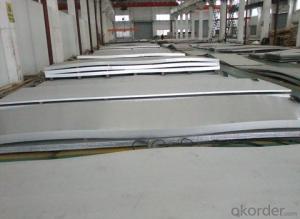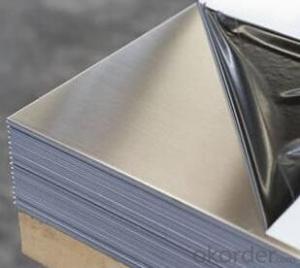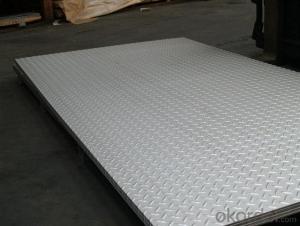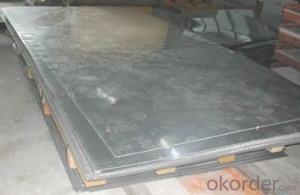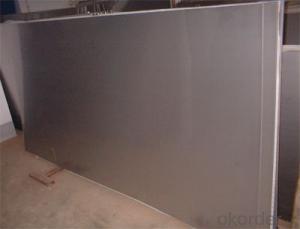Stainless steel plate/sheet 304,201,202,310S,309S,316L,321,304L,410,420,430,444
- Loading Port:
- Shanghai
- Payment Terms:
- TT OR LC
- Min Order Qty:
- 500 m.t
- Supply Capability:
- 5000000 m.t/month
OKorder Service Pledge
OKorder Financial Service
You Might Also Like
Stainless steel plate/sheet
304,201,202,310S,309S,316L,316Ti,321,304L,410,420,430,444,443,409L,904L
| Description | steel sheet,hot rolled steel sheet,cold rolled steel sheet, steel sheet,sheet,steel plate |
| Standard | ASME, ASTM, EN ,BS,GB,DIN, JIS etc |
| Application | Steel sheet applies to construction field, ships building industry, petroleum & chemical industries, war and electricity industries, food processing and medical industry, boiler heat exchanger, machinery and hardware fields. |
| Packaging | Standard export sea-worthy packing |
| Delivery time | 10-30 days |
| Note | Our company has cooperative relation between the domestic agents. Stainless steel sheet can be made accordingto the customers requirements. Fasten delivery. Quality assured. |
| Quality | No.1 |
| Productivity | 1200ton/day |
| Contacts | If you have any question,please feel free contact me. |
Stainless steel sheet surface finish characteristics
| Surface finish | Characteristics and application |
| 2B | The surface brightness and flatness of no2B is better than no2D. then through a special surface treatment to improve its mechanical properties,No2B could nearly satisfy comprehensive uses. |
| No.1 | Polished with abrasive belt of grit#100-#200, have better brightness with discontinuous coarse stria, used as inner and external ornaments for building, electrical appliances and kitchen utensils etc. |
| No.4 | Polished with abrasive belt of grit #150-#180,have better brightness with discontinuous coarse stria, but thinner than No3, are used as bathtub buildings inner and external ornaments electrical appliances kitchen utensils and food processing equipment etc. |
| HL | Polished with abrasive belt of grit #150-#320 on the NO.4 finish and has continuous streaks, mainly used as buildings ornaments elevators, door of building, frontal plate etc. |
| BA | Cold rolled, bright annealed and skin-passed, the product have excellent brightness and good reflexivity like mirror, kitchen apparatus, ornament etc. |
| 8K |
Product Shows :
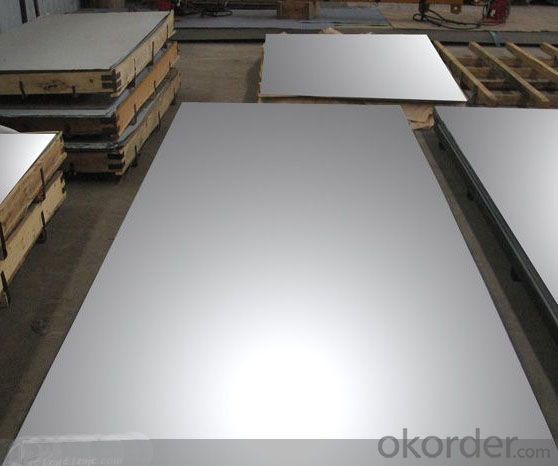

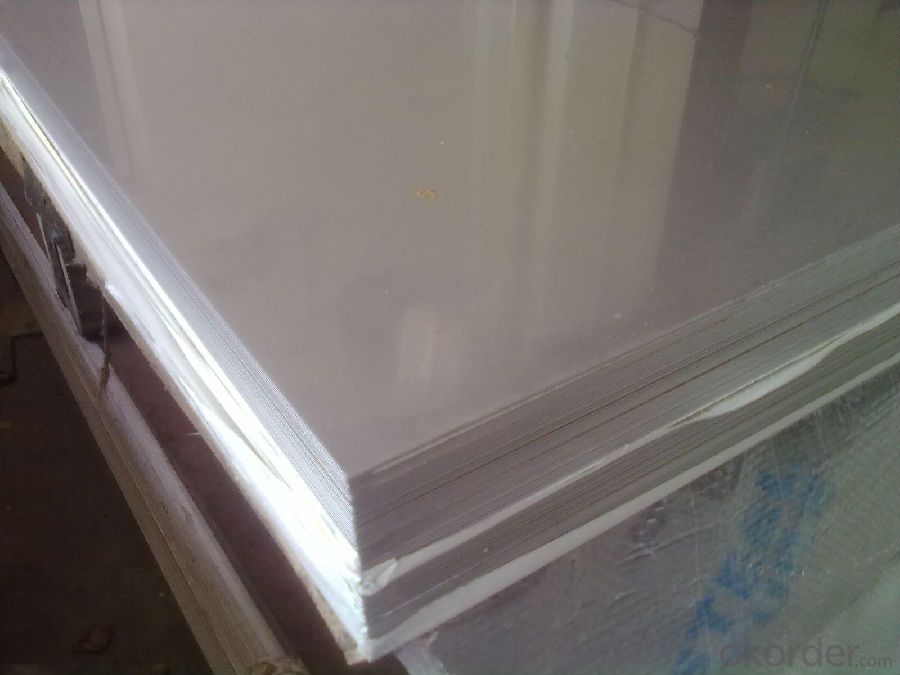
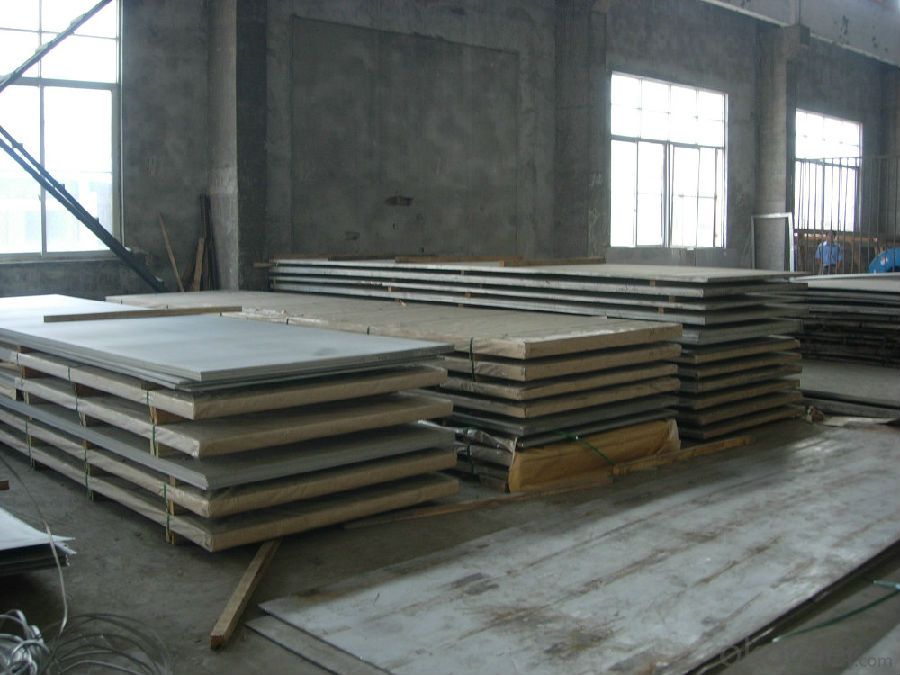

Application :
•Escalator, Elevator, Doors
•Furniture
•Production tools, Kitchen appliances, freezers, cold rooms
•Auto Parts
•Machinery and Packaging
•Equipment and Medical devices
•Transport system
Packaging and Loading

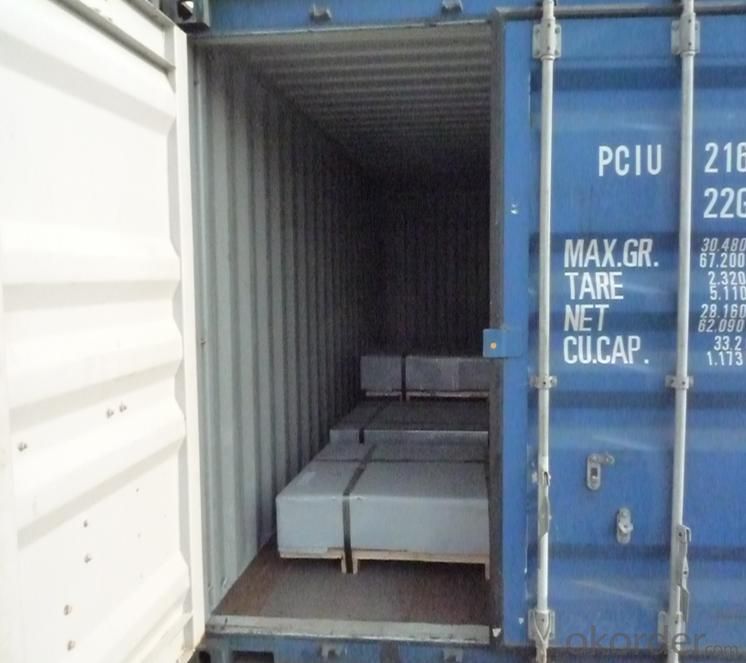
- Q:How do you prevent intergranular corrosion in stainless steel sheets?
- To prevent intergranular corrosion in stainless steel sheets, several methods can be employed. First, the selection of the appropriate stainless steel grade is essential. Grades with a low carbon content, such as 304L or 316L, are less susceptible to intergranular corrosion compared to higher carbon grades. This is due to their ability to minimize the formation of chromium carbide precipitates, which are the main cause of intergranular corrosion. Another method is heat treatment. Processes like solution annealing and quenching can help eliminate or reduce the formation of chromium carbide precipitates. By dissolving existing precipitates and promoting the formation of a protective chromium oxide layer on the surface, the corrosion resistance of the stainless steel is restored. Careful attention must also be given to welding techniques when working with stainless steel sheets. Processes like gas tungsten arc welding (GTAW) or laser welding, which provide precise control over heat input, are preferred. It is also advisable to use low carbon filler metals or consumables specifically designed for intergranular corrosion resistance to minimize the risk of corrosion. After welding, thorough cleaning of the welded area is crucial to remove any contaminants or oxide scales that could promote corrosion. Acid cleaning followed by passivation helps restore the protective oxide layer and enhances the stainless steel's resistance to intergranular corrosion. Lastly, it is important to avoid sensitization, which occurs when stainless steel is exposed to high temperatures for extended periods. Prolonged exposure to temperatures between 450-850°C (842-1562°F) during fabrication or service should be avoided to prevent sensitization and subsequent intergranular corrosion. By implementing these preventive measures, intergranular corrosion in stainless steel sheets can be effectively minimized, ensuring the longevity and performance of the material in various applications.
- Q:Can stainless steel sheets be used for elevator handrails or grab bars?
- Yes, stainless steel sheets can be used for elevator handrails or grab bars. Stainless steel is a popular choice for these applications due to its durability, corrosion resistance, and aesthetic appeal. Stainless steel sheets can be fabricated into various shapes and sizes to meet the specific requirements of elevator handrails or grab bars, ensuring safety and comfort for users. Additionally, stainless steel is easy to clean and maintain, making it a practical choice for high-traffic areas such as elevators.
- Q:How do I prevent pitting on stainless steel sheets?
- To minimize the occurrence of pitting on stainless steel sheets, there are several steps that can be taken: 1. Opt for the appropriate grade of stainless steel: The resistance to corrosion varies among different grades. It is advisable to select a higher-grade stainless steel, such as 316 or 304, as they offer better protection against pitting. 2. Maintain proper cleaning and upkeep: It is essential to regularly clean the stainless steel sheets using mild soap or a non-abrasive cleaner. Harsh chemicals and abrasive scrubbers should be avoided, as they can scratch the surface and create areas prone to pitting. 3. Prevent exposure to corrosive substances: Shield the stainless steel sheets from extended contact with corrosive substances like saltwater, strong acids, or chlorides. If unavoidable in certain environments, consider applying a protective coating or finish. 4. Control the environment: Ensure that the stainless steel sheets are not exposed to excessive moisture, humidity, or high temperatures. These factors can expedite corrosion and promote pitting. If feasible, store the sheets in a controlled environment with adequate ventilation. 5. Conduct regular inspections and maintenance: Regularly inspect the sheets to detect any signs of pitting or corrosion. If pitting is observed, take immediate action to remove it and prevent further damage. Promptly address any scratches or damages on the surface to prevent the initiation of corrosion. 6. Utilize protective coatings: Consider applying a protective coating or film on the stainless steel sheets. These coatings act as a barrier against corrosive substances and enhance overall resistance to pitting. By adhering to these preventive measures, the risk of pitting on stainless steel sheets can be minimized, ensuring their longevity and durability.
- Q:Are stainless steel sheets suitable for cryogenic storage tanks?
- Yes, stainless steel sheets are suitable for cryogenic storage tanks. Stainless steel has excellent mechanical properties and high resistance to corrosion, making it an ideal material for storing low-temperature substances in cryogenic conditions.
- Q:Can stainless steel sheets be used for elevator shafts?
- Yes, stainless steel sheets can be used for elevator shafts. Stainless steel is a durable and corrosion-resistant material that is commonly used in construction for its strength and aesthetic appeal. Elevator shafts require materials that can withstand constant use and exposure to various elements, making stainless steel an ideal choice.
- Q:How do I prevent galvanic corrosion on stainless steel sheets?
- To prevent galvanic corrosion on stainless steel sheets, there are several measures you can take: 1. Ensure proper alloy selection: Choose a grade of stainless steel that is less prone to galvanic corrosion. Grades such as 316 and 317 are more resistant to corrosion compared to 304 stainless steel. 2. Separate dissimilar metals: Avoid direct contact between stainless steel sheets and other metals, especially those with a higher potential for galvanic corrosion. If contact is necessary, use insulating materials such as gaskets or rubber pads to separate the metals. 3. Use protective coatings: Apply protective coatings or paints specifically designed for stainless steel to create a barrier and prevent galvanic corrosion. These coatings act as a sacrificial layer, shielding the stainless steel from direct contact with the corrosive material. 4. Use isolation materials: Install insulating materials between stainless steel sheets and other dissimilar metals. These can include plastic washers, insulating tape, or non-conductive gaskets to prevent direct electrical contact and subsequent corrosion. 5. Proper maintenance: Regularly clean and inspect stainless steel sheets to remove any contaminants or foreign substances that could promote corrosion. Avoid using abrasive cleaners or tools that could damage the protective layer of the stainless steel. 6. Electrochemical protection: Implement cathodic protection techniques, such as using sacrificial anodes or impressed current systems, to provide an external source of electrons that can counteract galvanic corrosion. These methods help shift the corrosion potential of the stainless steel sheets to a more passive range. By following these preventive measures, you can significantly reduce the risk of galvanic corrosion on stainless steel sheets, ensuring their longevity and maintaining their structural integrity.
- Q:Can stainless steel sheets be used for elevator panels?
- Yes, stainless steel sheets can be used for elevator panels. Stainless steel is a popular material choice for elevator panels due to its durability, strength, and aesthetic appeal. It is resistant to corrosion, damage, and wear, making it suitable for high-traffic areas like elevators. Stainless steel panels are also easy to clean and maintain, which is important for maintaining a clean and polished appearance in elevators. Additionally, stainless steel can be easily customized and fabricated to fit specific elevator dimensions and design requirements. Overall, stainless steel sheets are a reliable and versatile option for elevator panels.
- Q:How do you calculate the weight of a stainless steel sheet?
- To calculate the weight of a stainless steel sheet, you need to know its dimensions (length, width, and thickness) and the specific gravity of stainless steel. First, determine the volume of the stainless steel sheet by multiplying the length, width, and thickness together. This will give you the volume in cubic units. Next, multiply the volume by the specific gravity of stainless steel, which is typically around 7.93 g/cm³ (grams per cubic centimeter). This will give you the weight of the stainless steel sheet in grams. To convert the weight to a different unit, such as kilograms or pounds, divide the weight in grams by the appropriate conversion factor. For example, to convert grams to kilograms, divide by 1000. To convert grams to pounds, divide by 453.59237. It is important to note that this calculation provides an estimate of the weight, as there may be slight variations in the specific gravity of stainless steel depending on the exact alloy and composition of the sheet.
- Q:Are stainless steel sheets heat-resistant?
- Yes, stainless steel sheets are heat-resistant.
- Q:Are stainless steel sheets suitable for corrosive environments?
- Yes, stainless steel sheets are suitable for corrosive environments. Stainless steel is known for its corrosion resistance properties, making it an ideal material for applications where there is exposure to moisture, chemicals, or other corrosive substances. This is due to the presence of chromium in stainless steel, which forms a protective layer on the surface, preventing the material from rusting or corroding. Additionally, stainless steel sheets are available in different grades, such as 304 and 316, which offer varying levels of corrosion resistance. Therefore, stainless steel sheets are commonly used in industries such as chemical processing, marine environments, food and beverage processing, and pharmaceuticals, where protection against corrosion is crucial.
1. Manufacturer Overview |
|
|---|---|
| Location | |
| Year Established | |
| Annual Output Value | |
| Main Markets | |
| Company Certifications | |
2. Manufacturer Certificates |
|
|---|---|
| a) Certification Name | |
| Range | |
| Reference | |
| Validity Period | |
3. Manufacturer Capability |
|
|---|---|
| a)Trade Capacity | |
| Nearest Port | |
| Export Percentage | |
| No.of Employees in Trade Department | |
| Language Spoken: | |
| b)Factory Information | |
| Factory Size: | |
| No. of Production Lines | |
| Contract Manufacturing | |
| Product Price Range | |
Send your message to us
Stainless steel plate/sheet 304,201,202,310S,309S,316L,321,304L,410,420,430,444
- Loading Port:
- Shanghai
- Payment Terms:
- TT OR LC
- Min Order Qty:
- 500 m.t
- Supply Capability:
- 5000000 m.t/month
OKorder Service Pledge
OKorder Financial Service
Similar products
New products
Hot products
Related keywords
